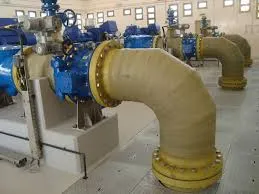
-
 Afrikaans
Afrikaans -
 Albanian
Albanian -
 Amharic
Amharic -
 Arabic
Arabic -
 Armenian
Armenian -
 Azerbaijani
Azerbaijani -
 Basque
Basque -
 Belarusian
Belarusian -
 Bengali
Bengali -
 Bosnian
Bosnian -
 Bulgarian
Bulgarian -
 Catalan
Catalan -
 Cebuano
Cebuano -
 China
China -
 China (Taiwan)
China (Taiwan) -
 Corsican
Corsican -
 Croatian
Croatian -
 Czech
Czech -
 Danish
Danish -
 Dutch
Dutch -
 English
English -
 Esperanto
Esperanto -
 Estonian
Estonian -
 Finnish
Finnish -
 French
French -
 Frisian
Frisian -
 Galician
Galician -
 Georgian
Georgian -
 German
German -
 Greek
Greek -
 Gujarati
Gujarati -
 Haitian Creole
Haitian Creole -
 hausa
hausa -
 hawaiian
hawaiian -
 Hebrew
Hebrew -
 Hindi
Hindi -
 Miao
Miao -
 Hungarian
Hungarian -
 Icelandic
Icelandic -
 igbo
igbo -
 Indonesian
Indonesian -
 irish
irish -
 Italian
Italian -
 Japanese
Japanese -
 Javanese
Javanese -
 Kannada
Kannada -
 kazakh
kazakh -
 Khmer
Khmer -
 Rwandese
Rwandese -
 Korean
Korean -
 Kurdish
Kurdish -
 Kyrgyz
Kyrgyz -
 Lao
Lao -
 Latin
Latin -
 Latvian
Latvian -
 Lithuanian
Lithuanian -
 Luxembourgish
Luxembourgish -
 Macedonian
Macedonian -
 Malgashi
Malgashi -
 Malay
Malay -
 Malayalam
Malayalam -
 Maltese
Maltese -
 Maori
Maori -
 Marathi
Marathi -
 Mongolian
Mongolian -
 Myanmar
Myanmar -
 Nepali
Nepali -
 Norwegian
Norwegian -
 Norwegian
Norwegian -
 Occitan
Occitan -
 Pashto
Pashto -
 Persian
Persian -
 Polish
Polish -
 Portuguese
Portuguese -
 Punjabi
Punjabi -
 Romanian
Romanian -
 Russian
Russian -
 Samoan
Samoan -
 Scottish Gaelic
Scottish Gaelic -
 Serbian
Serbian -
 Sesotho
Sesotho -
 Shona
Shona -
 Sindhi
Sindhi -
 Sinhala
Sinhala -
 Slovak
Slovak -
 Slovenian
Slovenian -
 Somali
Somali -
 Spanish
Spanish -
 Sundanese
Sundanese -
 Swahili
Swahili -
 Swedish
Swedish -
 Tagalog
Tagalog -
 Tajik
Tajik -
 Tamil
Tamil -
 Tatar
Tatar -
 Telugu
Telugu -
 Thai
Thai -
 Turkish
Turkish -
 Turkmen
Turkmen -
 Ukrainian
Ukrainian -
 Urdu
Urdu -
 Uighur
Uighur -
 Uzbek
Uzbek -
 Vietnamese
Vietnamese -
 Welsh
Welsh -
 Bantu
Bantu -
 Yiddish
Yiddish -
 Yoruba
Yoruba -
 Zulu
Zulu
fiberglass pipes and fittings for ship building
The Role of Fiberglass Pipes and Fittings in Shipbuilding
In the modern shipbuilding industry, the materials used in construction play a crucial role in the performance, durability, and safety of vessels. Among these materials, fiberglass reinforced plastic (FRP) pipes and fittings have emerged as a popular choice due to their unique properties and advantages. This article explores the significance of fiberglass pipes and fittings in shipbuilding, addressing key benefits, applications, and future prospects.
Advantages of Fiberglass Pipes and Fittings
One of the major advantages of fiberglass pipes is their lightweight nature. Compared to traditional materials such as steel or concrete, fiberglass is significantly lighter, reducing the overall weight of the vessel. This characteristic is particularly important in shipbuilding, as it enhances fuel efficiency by decreasing the energy required for propulsion. A lighter ship translates to reduced operational costs over its lifespan.
Another significant benefit of fiberglass pipes and fittings is their corrosion resistance. Ships are exposed to harsh marine environments, including saltwater, humidity, and extreme temperatures. Traditional materials often succumb to corrosion, leading to costly maintenance and replacements. FRP materials do not rust or corrode, which ensures longevity and lower maintenance costs. This corrosion resistance is particularly beneficial for systems involving water, sewage, fuel, and other corrosive substances.
Additionally, fiberglass has excellent thermal insulation properties. This feature is essential in shipbuilding as it helps maintain optimal temperatures within the vessel, particularly for HVAC systems. Furthermore, thanks to their smooth internal surfaces, fiberglass pipes have lower frictional losses, contributing to enhanced system efficiency. This characteristic is particularly critical in pumping systems, where optimized flow can lead to significant energy savings.
Versatile Applications in Shipbuilding
fiberglass pipes and fittings for ship building

Fiberglass pipes and fittings find applications in various systems within a ship. One of the primary uses is in the water and sewage systems. The non-corrosive nature of fiberglass makes it ideal for transporting freshwater, graywater, and sewage without the risk of contamination. This is vital for ensuring the safety and health of crew members onboard.
Another significant application is in fuel systems. Fiberglass pipes can handle various fuels without degrading, preventing leaks and spills that could pose environmental hazards. Additionally, these pipes are often used in ballast systems, where water is taken onboard to provide stability for the vessel. Their resistance to seawater corrosion makes them an ideal choice for these critical applications.
Moreover, fiberglass fittings are essential components in complex piping systems, offering versatility in design and layout. With numerous shapes, sizes, and configurations available, shipbuilders can create customized solutions to meet specific needs. This adaptability also allows for easier installations, further reducing the time and labor costs associated with shipbuilding.
Future Prospects
The future of fiberglass pipes and fittings in shipbuilding looks promising. As the industry continues to prioritize sustainability and environmental responsibility, the demand for materials that reduce weight and maintenance while enhancing durability is likely to grow. Innovations in composite materials technology may lead to even more robust fiberglass products, further expanding their applications.
Moreover, as regulations surrounding emissions and environmental protection become stricter, shipbuilders are increasingly looking for alternatives to traditional materials. The lightweight and corrosion-resistant qualities of fiberglass make it an attractive option for meeting these new standards while still delivering performance.
In conclusion, fiberglass pipes and fittings are proving to be invaluable assets in modern shipbuilding. Their lightweight, corrosion-resistant, and thermally efficient properties make them ideal for various critical applications, enhancing the overall performance and longevity of vessels. As the industry evolves, the continued integration of fiberglass solutions will not only optimize ship designs but also contribute to more sustainable and efficient maritime operations. As shipbuilders move towards a greener future, the role of fiberglass in marine applications will undoubtedly expand, paving the way for innovative advancements in ship design and construction.









